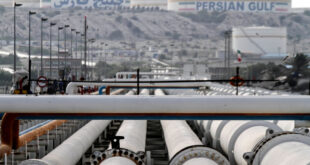Studies show the Dniester Hydropower Complex is already having a devastating impact on the water quality and biological diversity of the river – the main source of drinking water for 8 million Ukrainians and Moldovans. Yet Kiev plans to continue expanding the complex as it looks to secure its energy independence.
On August 17, the prime minister of Ukraine, Denys Shmyhal, landed by helicopter in the village of Vasilivka, in the Chernivtsi region of north-western Ukraine, at a special heliport set up near to what has become one of his country’s most strategic projects – the Dniester Pumped Storage Hydroelectric Power Plant (Dniester PSPP).
This giant structure being built on the western banks of the Dniester River, connected by what look like concrete tentacles to a huge basin on a nearby promontory near the village of Vasilivka, is one piece of a sprawling hydroelectric power complex on the river – a key part of the Ukrainian state’s energy strategy until 2035, which is designed to promote energy security and stability.
The Dniester PSPP, when completed, will comprise seven hydraulic units with a total capacity of 2,268 megawatts (MW), which would make it the largest such plant in Europe and the sixth largest in the world. Its design is presented as “unique” by the Ukrainian authorities because it operates in a pump-turbine mode, which allows the use of energy accumulated at night to generate electricity during times of peak demand.
Specifically, at night the hydraulic units pump water from the Dniester into the upper basin, thereby consuming the surplus of cheap electricity from electricity networks. In the morning, during peak hours, the same amount of water can be discharged back into the Dniester through generators, producing electricity.
“Today we have an exceptional event – the launch of the fourth generator of the Dniester PSPP,” Shmyhal was quoted by the Ukrinform news agency as telling the gathered dignitaries and reporters.
“This [fourth] unit will ensure the reliable operation of the power system of Ukraine during periods of peak load. Ukrainians will receive reliable electricity supplies and clean energy. Most importantly, PJSC Ukrhydroenergo is tasked with the important social responsibility of the supply of electricity currently used by the population of Ukraine, and this allows us to talk about a cheaper electricity tariff,” stressed Shmyhal.
Shmyhal also noted the important role that the plant will have in integrating Ukraine’s energy system into Europe’s, whose European Network of Transmission System Operators, or ENTSO-E, represents 42 electricity transmission system operators from 35 countries across Europe.
Yet for Ukraine’s neighbour Moldova, which lies downstream of the Dniester, the benefits of this power plant and the other constructions that make up the Dniester Hydropower Complex are more elusive. And the attitude of the Ukrainian government towards this key national energy project is often secretive, its actions untransparent and statements misleading.
It’s hard to overstate the importance of the Dniester to Moldova. Some 437 kilometres of the river’s total 1,362-kilometre length lies within the borders of Moldova, while a 220-kilometre river section is shared between Ukraine and Moldova. The Dniester Basin in Moldova covers the major part of country’s area, 59 per cent, with 2.74 million people living within its area, and it is the country’s main source of drinking water for the population.
Yet according to the preliminary findings of a study on the social and environmental impact of the Dniester PSPP, commissioned by UNDP Moldova and published in June, the plant is already having a hugely detrimental effect on both the flow and quality of the water in Moldova, as well as the region’s natural habitat of flora and fauna.
And investigations by BIRN have shown that contrary to statements by the Ukrainian state company that operates the Dniester PSPP, activities to widen the riverbed upstream are in fact taking place, which together with the completion of the fourth generator will contribute to a reduction in the flow of the Dniester and intensify river pollution, endangering the supply of drinking water to Moldova and the Odessa region of Ukraine.
“The Moldovan side has already received from Ukrhydroenergo the rules for the operation of Dniester Hydropower Complex, with seven generators at Dniester PSPP… Consequently, the drying up of the Dniester River will continue. This means that Moldova will be left without a source of drinking water,” says Elena Zubcov, a member of the Dniester Commission and the Academy of Sciences of Moldova. “In my opinion, this is a crime.”
Stalinist origins
The massive project to construct hydroelectric power plants on the Dniester was actually conceived in 1945 during the time of Soviet dictator Joseph Stalin. After Ukraine declared independence in 1991, successive governments have set out to complete it.
The Dniester PSPP is part of the larger Dniester Hydropower Complex, which consists of two other hydroelectric power plants – No. 1 and No. 2 – and three huge reservoir lakes.
Hydro Power Plant No. 1 is located near the town of Novodnestrovsk. The construction of this plant began in 1973, and the last generator, the sixth, went into operation in 1983. Hydro Power Plant No. 2 is located downstream, near the localities of Nagoreany (Ukraine) and Naslavcea (Moldova). This construction was built on the former Naslavcea dam and has three generators.
The Dniester reservoir was built between 1981 and 1987, and has a capacity of 3 billion cubic metres. By comparison, the Prut River, the second biggest river in Moldova, has an annual flow of 2 billion cubic metres.
The Storage reservoir consists of the two dams – Hydro Power Plant No. 1 and Hydro Power Plant No. 2 – with a length of 20 kilometres and a capacity of 40 million cubic metres.
The Upper reservoir covers an area of 250 hectares, the equivalent of about 156 football stadiums. It has 35 million cubic metres of water, similar to the largest reservoir in Moldova, Lake Ghidighici. The Dniester and Storage reservoirs have been constructed on the Dniester riverbed, while the Upper is located on the hill above the village of Vasilivka.
Ukraine’s existing hydroelectric facilities on the Dniester, all operated by the state-owned company Ukhydronenergo, are primarily concentrated in Ukraine just 20-30 kilometres upstream from the border with Moldova.
Hydro Power Plant No. 2 and part of the Storage reservoir are situated on Moldovan territory that is managed by Ukraine. Together, these three constructions produce 4 billion kilowatt hours (kWh) of power per year, equivalent to Moldova’s entire annual electricity consumption (minus the breakaway region of Transnistria).
According to Kiev, the Dniester PSPP is crucial for the country’s energy system. It ensures the regular operation of the country’s four nuclear power plants. In addition, it consumes and stores the excess electricity produced by the nuclear plants at night and generates electricity during peak hours. Ukraine has also revealed plans to export some of the electricity produced to Moldova and Romania.
Fences, roads and dry wells
Aliona, 50, a saleswoman at a store in Vasilivka, did not understand precisely the purpose of Prime Minister Shmyhal’s recent visit. “He came by helicopter. Only after that did they start paving our streets. It used to be asphalt, but with many potholes,” Aliona remembers.
The locals of Vasilivka, who number about 1,000, don’t seem particularly enthusiastic about the hydroelectric power plant that has grown up in their midst. The biggest problem for them immediately after construction of the plant and Upper reservoir began was the disappearance of drinking water from their wells. “For those who ran out of water, the hydroelectric plant leadership installed some taps inside their homes,” says Aliona.
The hydropower plant management also compensated locals for the lack of water from their wells with good roads and aqueducts. Roads are a rarity in this part of Ukraine; the other localities in the area have underdeveloped or utterly absent infrastructure.
All road infrastructure is concentrated around the various constructions of the Dniester Hydropower Complex, leaving the narrow, paved streets that meander between the tiny old houses of the village crowded during the day with people dressed in the blue employee uniforms of Ukrhydroenergo.
The importance of this strategic project that has been imposed on the people of Vasilivka can be seen in the heightened security regime. Many security signposts placed on high barbed-wire fencing warn passers-by that they are in a restricted traffic area, where it is forbidden to photograph, film and use drones. The fences also guard the Upper reservoir – a vast, eye-catching pool of water located on a hilltop situated on the western bank of the Dniester.
Problems downstream
In the Storage reservoir, the one built on the riverbed of the Dniester, water is almost non-existent for a distance of over 20 kilometres, with waterfowl skimming the surface in search of food among the plankton that have risen to the surface.
Apparently, water pumped during the night into the Upper reservoir is not always discharged back into the Dniester in the morning, only when Ukrhydroenergo deems it necessary according to the needs of the Ukrainian electricity network.
In fact, the volume of water in the Dniester downstream from the Dniester Hydropower Complex in Moldova is entirely related to the day-to-day energy needs of Ukraine – something which the locals who have to live there loudly protest about.
About 30 kilometres downstream from Vasilivka in the Moldovan village of Naslavcea, populated mainly by ethnic Ukrainians, the locals express their anger at Ukrhydroenergo for the low volume of water discharged from the Dniester Hydropower Complex and the environmental problems caused by the three hydropower plants. The locals complain about not being able to bathe, fish and water their cattle in the Dniester any more, but seem mostly bothered by the smell emanating from the plankton that rots at the surface.
Valentin, a 73-year-old with white hair and blue eyes, dressed in an old and thin blue-striped shirt, relates how when he was a child he used to swim on the Ukrainian side of the Dniester. “It’s no longer possible to enter the Dniester – the water is so cold that it cuts off your feet,” he says.
Furthermore, the water quality in the Dniester here is now so bad that not even Valentin’s cow wants to drink the water from the river. “First of all, the water is filled with mud and all kinds of algae. Second, summer is so stinky it’s impossible to get close to it,” he explains.
Liuda, a 60-year-old woman, stands in front of her gate with an octogenarian neighbour and tells BIRN, in Ukrainian peppered with Russian words, about an incident related to the Naslavcea dam.
“About seven years ago, I went to the Dniester River to the beach. A large fish was swimming on the surface of the water. Our men were already drunk. Only my husband jumped into the water alone and caught it. When he took it ashore, I saw that its tail was hanging off – that’s why it was swimming so weirdly – the hydroelectric plant had almost cut its tail off,” she says.
Moldova folds
The actions of successive Moldovan governments over the issue have also done little to help the locals who are forced to live with the consequences of the Dniester Hydropower Complex.
In 2010, the Moldovan government ceded control over the Naslavcea dam, which provides access to water from Ukraine, when then-prime minister Vlad Filat signed a protocol with his Ukrainian counterpart Yulia Tymoshenko, under which Ukraine claimed the dam in return for Moldova obtaining recognised ownership of two stone quarries located on the border.
This, Filat now admits, was a terrible deal for Moldova. “It’s a disgraceful outcome for us because we didn’t know,” the former prime minister tells BIRN. “Maybe I should have gone there to look, but I didn’t have that information.”
Prior to that, in the 1990s and early 2000s, Ukrhydroenergo had installed three generators on its part of the Naslavcea dam without Moldova’s consent. These formed the second hydropower plant of the Dniester Hydropower Complex, Hydro Power Plant No. 2.
Yet under the Espoo (EIA) Convention, which both countries have ratified, Ukraine is obliged to assess the environmental impact of such projects at an early stage of planning, while also notifying and consulting its neighbours on all major projects under consideration that are likely to have a significant adverse environmental impact across boundaries.
For example, increasing the capacity of the hydropower plants within the Dniester Hydropower Complex involves the expansion of reservoirs, which necessitates the widening of the Dniester riverbed on Ukrainian territory. “But [Ukrhydroenergo] did not present such a thing to the government of Moldova, although the Espoo Convention provides for this,” Ilya Trombitsky, executive director of Eco-TIRAS International Association of River Keepers, tells BIRN.
Ruslan Gavriliuk, head of the National Ecological Centre of Ukraine, explains to BIRN that Ukrhydroenergo obtained authorisation for the construction of the fourth generator at Dniester PSPP in October 2017, when Ukraine was governed by old environmental legislation that was not so rigorous from an ecological point of view. Two months after receiving the authorisation, Ukraine adopted new stricter environmental legislation that followed European standards.
“The materials on the environmental impact of the fourth generator were not made public. Therefore, the Ukrainian ecological community did not have access to these documents,” Gavriliuk says.
The results are plain to see. The wastewater now discharged by the Dniester Hydropower Complex into Moldovan territory is of poor quality and a numbingly low temperature. The Dniester at Naslavcea is exceptionally clear, devoid of life, and the depth of just the palm of a hand. As a result, it resembles more a lake than a flowing river.
“All these problems are not only related to the fact that the water has such a quality, but that it does not come in the necessary volumes,” complains Zubcov of the Moldovan Academy of Sciences, who also sits on the Moldovan-Ukrainian bilateral negotiating commission for the Dniester River.
The majority of the water in the Dniester, some 80 per cent, has its sources in Ukraine; the other 20 per cent is sourced from the territory of Moldova. The Moldovan authorities are requesting Kiev ensure a flow of 250 cubic metres per second at Naslavcea in a continuous flow.
“We now have only 100–150 cubic metres per second – in other words, only half the river comes [to Moldova],” insists Zubcov. “And this is not even permanently, but according to a certain program determined by the needs of electricity production at the Dniester Hydropower Complex.”
“The water discharged from the complex has a constant 6-8 degrees Celsius throughout the year – a temperature at which the species from this aquatic area cannot develop,” says environmental expert Valeriu Cazac.
Plans clear as mud
Despite the mounting complaints from the Moldovan authorities, locals and environmentalists, Ukraine is continuing its expansion plans for the Dniester Hydropower Complex and seems to be no more transparent nor forthright about them.
To complete the Dniester PSPP by taking the number of generators there up to seven, the Storage reservoir will need to be expanded from its current capacity of 40 million cubic metres – a volume approximately equal to that of the Upper reservoir.
In August 2017, the Ukrainian authorities requested Moldova lease 19 hectares of its territory to Ukrhydroenergo “to ensure the operation of the Dniester Hydropower Complex”.
Chisinau has so far refused to supply an answer to Kiev due to concerns about the impact of the development of the complex on the river. And former prime minister Filat believes this gives Moldova leverage in its negotiations with Ukraine over the flow of the Dniester on its territory. “Without the 19 hectares owned by the Republic of Moldova, [the Ukrainians] cannot put the seven generators into operation, so the ball is in our court,” Filat says.
Yet in response to questions from BIRN, Ukrhydroenergo claims that it no longer needs the additional land to finish the construction of the Dniester PSPP. “The land requested from the Republic of Moldova is necessary only for the consolidation of the banks and for the prevention of soil erosion,” the Ukrainian company said.
Even so, photo and video materials obtained by BIRN and images from Google Earth show that Ukrhydroenergo is currently working to widen the Dniester riverbed on its territory, on the segment between Novodnestrovsk and the border of Moldova, without apparently notifying the Moldovan authorities.
Contacted by BIRN, representatives of Ukrhydroenergo denied the company is currently carrying out such activities to widen the riverbed. “Ukrhydroenergo does not plan to widen the Dniester riverbed… The territory of the site for improving hydraulic features of the downstream Storage reservoir is the project concept of Stage 1 of the Dniester Pumped Storage Power Station… which was approved in the early 2000s and passed the Ukrainian State Specialised Building Expert Examination many times,” they said.
Experts warn that if what BIRN has uncovered is true, then work carried out unilaterally like this often has even worse consequences for the countries involved.
A study published in January 2021 by four environmental experts from Ukraine and Moldova in the scientific journal Springer Nature shows a challenging reduction in the seasonal streamflow in spring due to water accumulation in the Dniester Hydropower Complex reservoirs for hydropower needs. “On the whole, in 1991–2015, the Dniester annual flow decreased from 10.22 to 9.15 cubic kilometres.”
Ukrhydroenergo claims that discharges are made on average at 100 cubic metres per second every day. The company also says that the water flow varies during the summer from 109-612 cubic metres per second, depending on the inflow into the reservoirs of the Dniester Hydropower Complex.
“The Dniester PSPP construction project has undergone numerous environmental impact assessments; ecological, investment, construction and interdepartmental expert evaluation; and public consultations and discussions. The conducted expert opinion recognises that the Dniester PSPP construction project is acceptable from an environmental point of view,” claims Ukrhydroenergo.
However, the Ukrainian company failed to address questions either about the inconsistent daily flow it delivers downstream to Moldova despite the obligation it has to ensure a continuous river flow, or the low temperatures and water quality.
Ukrhydroenergo’s position is helped enormously by the Moldovan government’s continuing passivity over the issues raised. The Moldovan Environment Ministry insists that it considers the Dniester Hydropower Complex to be having no impact currently on the water flow of the Dniester.
“Mud banks, vegetation-covered islands, and submerged islands are a characteristic annual phenomenon from the end of summer to the beginning of autumn. This process is determined by the low level of precipitation during the arid periods of the year in the mountainous and pre-mountainous areas of Ukraine,” the ministry claims
This indulgent position of the Moldovan authorities toward the Dniester Hydropower Complex is partly explained by the conditions imposed by Ukraine over the breakaway region of Transnistria, which is now considered a ‘frozen conflict’ after Moldova and Russia signed in 1992 a convention on the principles of peaceful settlement of the armed conflict.
According to some experts, Kyiv has said it will support Moldova over the Transnistria issue as long as the government continues to turn a blind eye to the Dniester issue. Asked by BIRN to acknowledge this situation on the record, Moldovan officials involved in negotiations with Ukraine denied this.
Yet it is clear that the problems over the Dniester flow will get worse if nothing is done to halt the expansion of the Dniester PSPP. “If the seven generators at the Dniester PSPP are put into operation, the volume of pumped water will increase. At the same time, it will increase the amplitude of water level fluctuations in the Storage reservoir and on the territory of Moldova. This will lead even more intensely to the reduction of the Dniester flow,” Gavriliuk believes.
Trombitsky of the Eco-TIRAS International Association of River Keepers agrees. “The most probable consequences [of the simultaneous operation of all four generators] will be to produce a bigger amplitude of daily water levels on the large Dniester River segment and further degradation of the river biota.”
“That means a deterioration in the self-cleaning ability of the river and, accordingly, an increase of the pollution, since the river cannot fight it,” he adds.
 Eurasia Press & News
Eurasia Press & News



